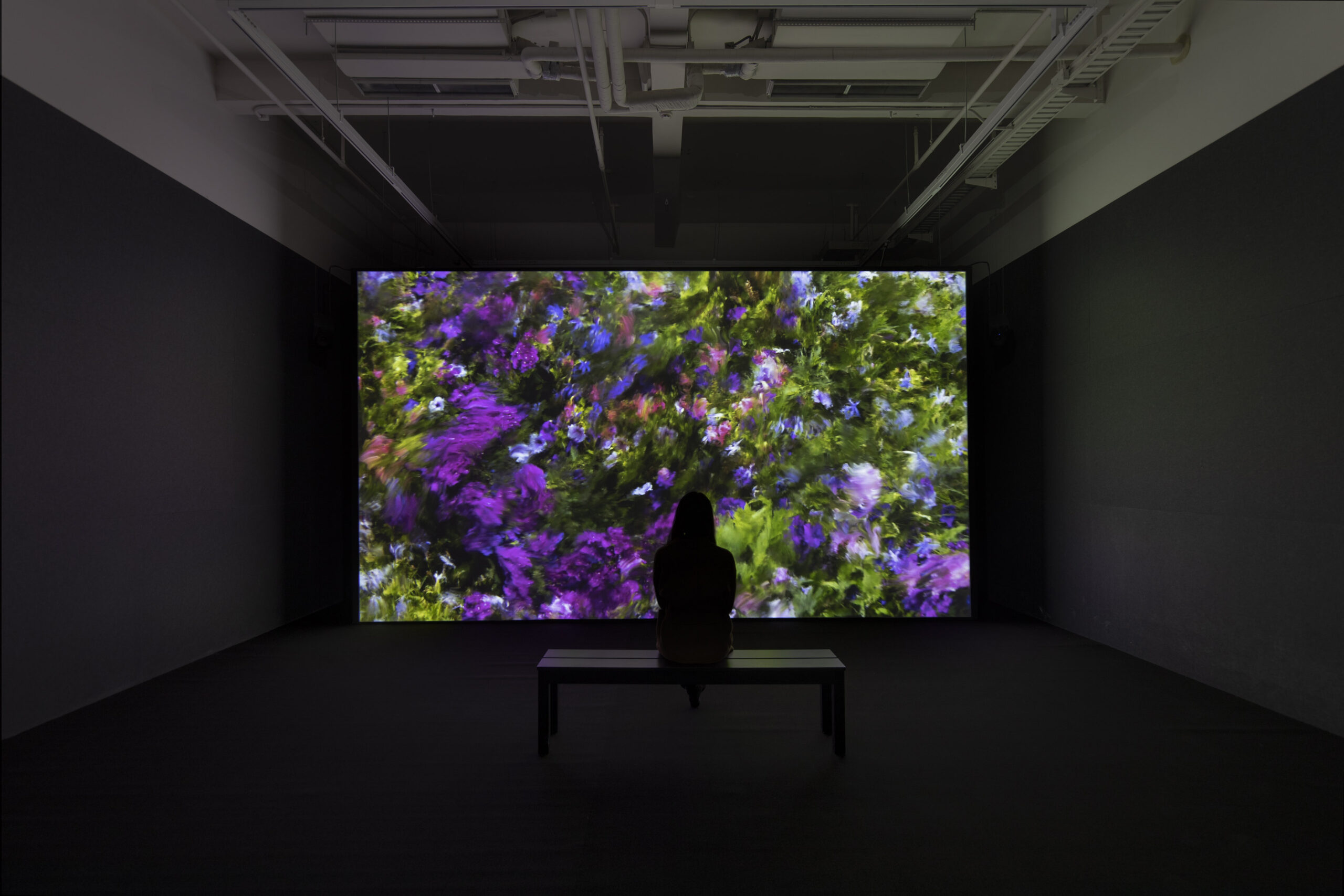
Jardins d’Été
Digital video created with custom software, sound, 43:12 minutes, 2017
Private collection
Jardins d’Été (summer gardens) is a series of videos and prints that uses generative systems to update the historical tradition of landscape painting. Evoking the loose painting style of the French Impressionists, particularly Claude Monet, Jardins d’Été depicts the gardens of Château de Chaumont-sur-Loire in France.
Quayola filmed the gardens at night using ultra-high-definition cameras, then used custom software to analyze the subtle movements of the flowers, grasses, and leaves. Using computer vision and machine learning tools, the software analyzes and extracts data from the original videos to extrapolate color palettes, landscape features, and the movement of the plants in the wind. This data guides what Quayola calls his “computational paintings.”
Just as the Impressionists developed a new type of landscape painting expressing the interplay of color and light, Quayola uses the machine’s gaze to interpret and translate nature into new forms of artistic representation. “The natural world and its impressions are not reproduced but re-elaborated, recodified,” he says.
A subfield of artificial intelligence that uses generative models trained on large data sets to create new content—text, images, music, or videos—by mimicking the underlying structures, patterns, and styles of what it was trained on. Popular commercial generative AI tools like ChatGPT, Dall-E, and Midjourney use a chatbot feature where users can prompt the AI system using natural language rather than code. These large-scale systems are trained using trillions of data points collected from the internet and are controversial for the way they appropriate (and imitate) existing intellectual property and for their energy usage and environmental impact.
A field of artificial intelligence that trains computers to analyze and interpret visual information. Using cameras and software, the computer can recognize objects, people, text, and actions.
A branch of artificial intelligence in which computers learn to make predictions or decisions by finding patterns in data, rather than being explicitly programmed for each task. The system improves its performance automatically through experience or the input of new data, getting better at tasks like recognizing images, translating languages, or making recommendations.